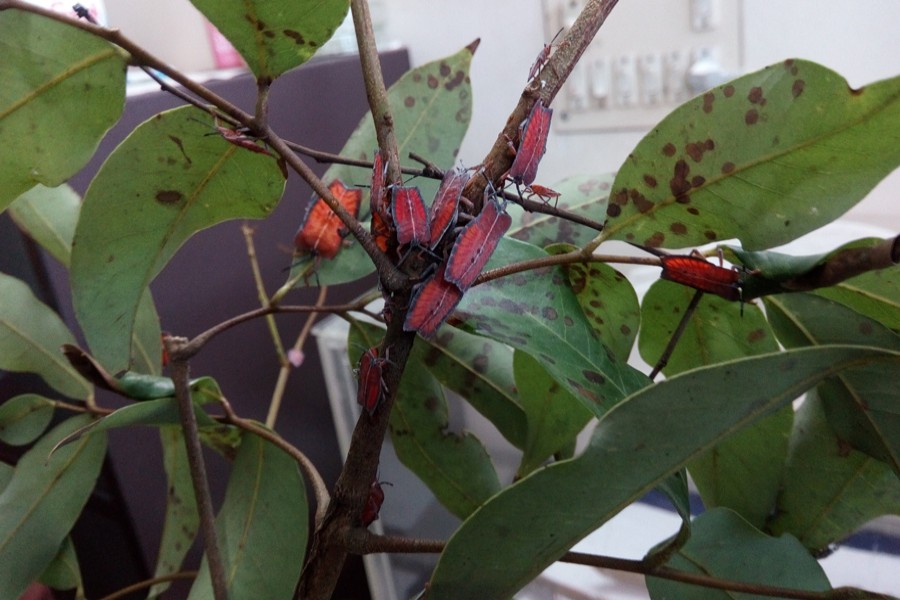
Published :
Updated :

SYLHET, May 03: A team of researchers have detected sporadic attack of insect of Hemiptera family on litchi trees at places in Sylhet although it was almost non-existent in the country years ago. It was first detected in 2016 in Bangladesh, a major damage to the fruit was in the last year.
The litchi stink bug (Tessaratoma javanica) is a giant bug from the Tessaratomidae family and Hemiptera order of insect, said Dr Md. Fuad Mondal, associate professor of the Department of Entomology at Sylhet Agricultural University.
According to reports, In 2014, this insect had caused about 90 per cent crop damage to litchi in Dauki area of Meghalaya, India, close to Sylhet borders, and in villages of Chhatishgarh in 2012.
Sources apprehend things might have spread to the Sylhet region again, just attached on the Meghalayan foothills. Normally the insect becomes active at the beginning of February or March and spread to the leaves, flower etc. The nymphs bud after 8 to 10 days and become insects in phases of transformation with the change of colour from white to grey.
Litchi plants suffered badly in the last year due to this pest's attack while its presence is reported from Gaibandha and Panchagarh too this year, Mr Mondal said.
Fuad Mondal said the insect should be picked up and destroyed since it remains on the litchi plant for the whole year. Collection and destruction of eggs is easier than that of the others. However, he added, yet there had been no major research on it. Chinese experience shows use of Chloropyriphos group pesticides could give a good result to destroy the insect.
Dr Md Fuad Mondal, claimed he had first noticed this insect in Sylhet region in 2016. From that year Dr. Mondal started his research on Litchi sting bugs. According his survey, this insect caused huge damage in litchi of Sylhet Sadar.
Adult litchi sting bug is bigger in size with brownish upper body and whitish waxy layer under lower surface of the body, he said. This insect hibernates in litchi trees from middle of June to the end of the January. At the beginning of February this insect become active. After copulation they lay eggs in a cluster under the leaves, in the inflorescence. Initially eggs are whitish colour finally they turn into blackish purple. After eight to 10 days, nymph come out from the eggs. Nymphs are very beautiful with red and black spot on the upper surface of the body. Nymph moults four times to become adults.
Adult and nymph both suck the cell sap from the young twigs, petioles of leaves, stalks of inflorescences. In severe case all the young fruits fell down from the litchi tree. As Dr. Mondal mentioned that this insect is not very common in Bangladesh so research on chemical control is necessary.
In China, insecticide from Chloropyrifos group showed good result to control this insect. Litchi sting bugs remain in the litchi tree all the year round. Collection of eggs, nymph and adults could be great solution for integrated pest management techniques. One thing is very important, this litchi sting bugs secret very poisonous gas to protect itself from other enemies. So during collection precaution should be taken.
forsylhet@gmail.com


 For all latest news, follow The Financial Express Google News channel.
For all latest news, follow The Financial Express Google News channel.